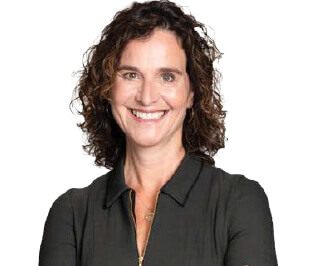Emotions at work
Here’s a question for CMOs. Are emotions part of marketing?
Well, what kind of question is that? The answer has been obvious for decades, made explicit by the work of academics like Daniel Kahneman, with his ‘System 1, System 2’ theory, showing how the automated, primitive part of the brain makes the real decisions. And bolstered, come to that, by the tenets of the evidence-based school, which deem that low attention processing characterises purchase decisions, and that consumers give scant rational consideration to picking up this brand or that.
Emotions drive decisions, the argument runs – even trivial consumption decisions – which means consumer emotional connection with the brand is tantamount to marketing nirvana. In this paradigm, emotions aren’t merely part of marketing, they’re its motivational essence.
All well and good, except my original question was a bit more nuanced than that. Sometimes we have to think inwards as well as outwards. So: as a CMO, do you believe emotions are an important consideration in your internal marketing culture? In your working relations? In your team dynamics? If you hire marketing people for their minds – their analytical skills, their rigour, their imagination – does it matter what kinds of emotions come along with them, or what kind of emotional environment they might find themselves in, either at the office or over Zoom?
Another, very different, shaft of academic enquiry has delved into this question – and carved out a seam of theory which has become known as the ‘affective revolution’.
‘Affective’ is academia speak for ‘emotional’, and the reason it is deemed revolutionary is that, for eons, emotions in the workplace were seen as just noise or as troublesome human foibles that got in the way of the real business of cognitive precision. Since about 1990, though, that has been shown to be some way off the mark.
Emotional contagion
One of the pioneers of the sub-discipline was the Wharton Professor of Management Sigal Barsade, who died of a brain tumour in February this year, at the age of 56. In a New York Times obituary, she was feted as the academic who ‘argued that it’s OK to show emotions at work’.
One of Barsade’s most enlightening contributions relates to the concept of emotional contagion. To a remarkable degree, what one person is feeling within a working group can be not just perceived but internalised by those around them, so they start experiencing it, too. As she phrased it, “We are walking mood inductors” – and the consequences can be good or bad.
In one experiment Barsade assigned the same task to different groups but, unbeknown to them, had arranged for an actor to be in each of them. Although that person’s verbal contributions would be consistent, they would vary their emotional body language group by group – leaning forward and smiling in one, leaning back and scowling in another. Both positive and negative emotions proved to be contagious but, significantly, the positive-emotion groups came to a consensus faster and with less conflict.

Sigal Barsade, who died in February 2022, aged 56
Barsade also took issue with the perception of emotions as noise. “Emotions are data” is one of her many arresting axioms – because they can tell us how a person is thinking and, more importantly, how they are likely to behave.
But some of her most insightful original research was achieved in the years before her premature death. In a co-authored 2019 paper she explored the roles of group hope and group fear in businesses that were facing serious difficulties, to assess which was more likely to achieve an ‘escalation of commitment’ to the troubled venture. In an interview that year she summed up the findings in three words: “hope trumps fear”.
That might be something CMOs might want to think about. I have seen all too often cultures where the underlying emotional current is one of unease, at best, or fearfulness of failure at worst.
How is it that CMOs who preach the gospel of empathy when it comes to consumer understanding can be oblivious to the tensions they themselves are seeding within their own workplace, even when it’s written on everybody’s faces? In good times, but particularly in bad, a more smiling, positive leadership emotional palette can make as much difference to the team as virtuosity in the discipline.
Marketing teamwork
As I trawl through Professor Barsade’s work, which I came across as part of the research for a book I am writing, I am given to waves of emotion myself. Watching her in a Wharton interview on YouTube, filmed in mid 2020, shortly after her diagnosis, is an experience both saddening and sobering. Uplifting, too, though, as you are drawn by her eloquence, scholarship and enormous passion for her subject – which is, itself, contagious.
Barsade’s output, and that of the affective revolution school, was not, of course, confined to marketing but spoke to the workplace more generally. But I would argue that it impinges more strongly on marketing than other disciplines because we are all about teamwork, and because we often have to make exposing, non-linear decisions that require high-stakes personal judgement. Who needs undercurrents of fear or anxiety, when it is tough enough already?
So, I suppose the real question here is why more of us – not just CMOs – don’t come into our daily marketing work zones ready to infect others with our positive, generous, life-affirming emotions, while we can.
